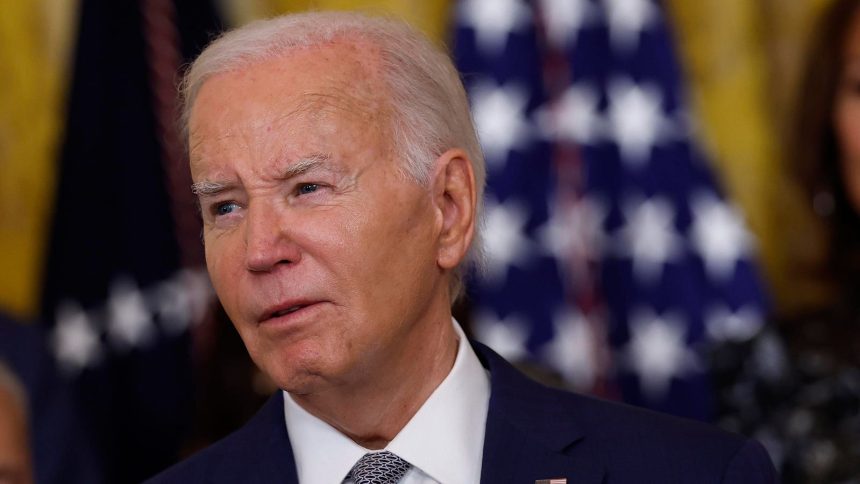A key Biden administration student loan forgiveness opportunity is winding down. And for some borrowers who must take a critical step of consolidating their loans in order to qualify, the window for taking action is rapidly closing.
The IDR Account Adjustment, one of the most successful of the Biden administration’s “targeted” student loan forgiveness efforts, has already resulted in at least $51 billion in student debt cancellation for more than a million borrowers. The temporary initiative is designed to address longstanding administrative problems with income-driven repayment plans, including poor record-keeping and harmful forbearance-steering practices. The initiative can also benefit borrowers pursuing Public Service Loan Forgiveness, a separate but related student loan forgiveness program designed to benefit nonprofit and public workers.
But some borrowers need to consolidate their student loans through a federal program in order to qualify or maximize the available benefits under the account adjustment. And the deadline to apply is June 30.
How Student Loan Forgiveness Works Under The Account Adjustment
The IDR Account Adjustment allows the Education Department to credit borrowers with time toward student loan forgiveness for past periods that may not have counted under earlier IDR and PSLF rules. The Biden administration implemented this temporary initiative to address historic problems with IDR and PSLF.
“If you’re on an IDR plan or working toward PSLF, your remaining loan balance gets forgiven after you make the required number of payments,” explains the Education Department in published guidance. Typically a borrower becomes eligible for student loan forgiveness after 20 or 25 years under IDR plans, or after 10 years under PSLF.
“In the past, there were a variety of reasons why some months may not have been credited toward loan forgiveness—for example, months when you were in a payment plan that wasn’t eligible,” says the department. “With this payment count adjustment, we will change whether certain payments or months are credited toward your loan forgiveness.”
Borrowers who receive enough IDR or PSLF credit to qualify for loan forgiveness can receive an automatic discharge as a result. Other borrowers won’t qualify for immediate student loan forgiveness, but will get closer to discharge eligibility (and shorten their remaining time in repayment) as a result of the retroactive credit.
Borrowers Seeking Loan Forgiveness Through IDR Or PSLF May Need To Consolidate For Account Adjustment
Government-held federal student loans qualify for the IDR Account Adjustment and can receive many of the benefits automatically. Government-held federal student loans include all Direct loans, as well as certain FFEL-program loans that have been assigned or transferred to the U.S. Department of Education.
“ED will conduct an adjustment of IDR-qualifying payments for all William D. Ford Federal Direct Loan (Direct Loan) Program and federally owned Federal Family Education Loan (FFEL) Program loans,” says department guidance.
But borrowers with other types of loans would need to consolidate through the Direct federal consolidation program in order to qualify for the IDR Account Adjustment. In particular, borrowers with commercially-held FFEL loans, as well as those who have Perkins loans or HEAL loans, would need to consolidate. In May, the Biden administration issued a belated extension of the consolidation deadline, which had expired on April 30. The new deadline to consolidate is June 30.
While the consolidation process itself can take a month or two (and sometimes longer), borrowers simply must apply to consolidate by the June 30 deadline to be timely for purposes of the IDR Account Adjustment. The consolidation application can be submitted online at StudentAid.gov.
The Education Department anticipates completing the account adjustment by September, at which point the initiative will come to an end.
Other Borrowers May Want To Consolidate To Pursue Student Loan Forgiveness Benefits
But it’s not just commercial FFEL loan borrowers, or those with HEAL or Perkins loans, who may need to consolidate by the June 30 deadline to pursue the student loan forgiveness benefits of the IDR Account Adjustment. Here are some other reasons that certain borrowers may want to consider consolidating their loans through the Direct loan program before the upcoming June 30 cutoff:
- Only Direct federal student loans qualify for PSLF. So borrowers with any FFEL-program loans interested in pursuing loan forgiveness through PSLF would need to consolidate into the Direct loan program, even if their FFEL loans are already held by the Education Department. Borrowers pursuing PSLF will also need to certify their employment to receive any loan forgiveness credit.
- Borrowers who have multiple federal student loans with significantly different repayment histories may also want to consider Direct loan consolidation before June 30, even if their existing student loans are already Direct loans. That’s because under the IDR Account Adjustment, “Assuming your repayment history overlaps for each loan, the consolidation loan will be credited with the longest amount of time in repayment of the loans that were consolidated,” according to department guidance.
- Parent PLUS loans don’t qualify for IDR plans or PSLF, but they can if they are consolidated into a Direct consolidation loan, albeit with certain important (and sometimes unfavorable) restrictions, including ineligibility for some of the more affordable IDR options. Importantly, Parent PLUS loans can receive IDR or PSLF credit under the IDR Account Adjustment, provided other eligibility criteria are met. However, whether Parent PLUS borrowers should consolidate is very much a case-by-case question. “You may or may not want to consolidate, depending on how long your oldest loan has been in repayment,” says the department in its guidance.
Legal Challenges Targeting Account Adjustment And IDR
Last month, a federal appeals court upheld the dismissal of a legal challenge to the IDR Account Adjustment. Had the challenge been allowed to proceed, it could have blocked the student loan forgiveness benefits associated with the initiative. The challengers have indicated that they are exploring options for further appeal. But so far, the challenge remains in a dismissed status.
Meanwhile, there are two pending legal challenges seeking to block the Biden administration’s Saving on a Valuable Education plan. SAVE is a new IDR option that can provide lower payments, interest subsidies, and faster student loan forgiveness in certain cases. If SAVE gets struck down, it would not necessarily result in the IDR Account Adjustment getting blocked. However, the elimination of SAVE could make repayment more expensive for borrowers who need to remain in IDR to continue progressing toward loan forgiveness.
Read the full article here
















